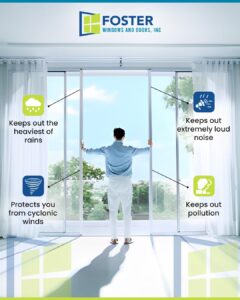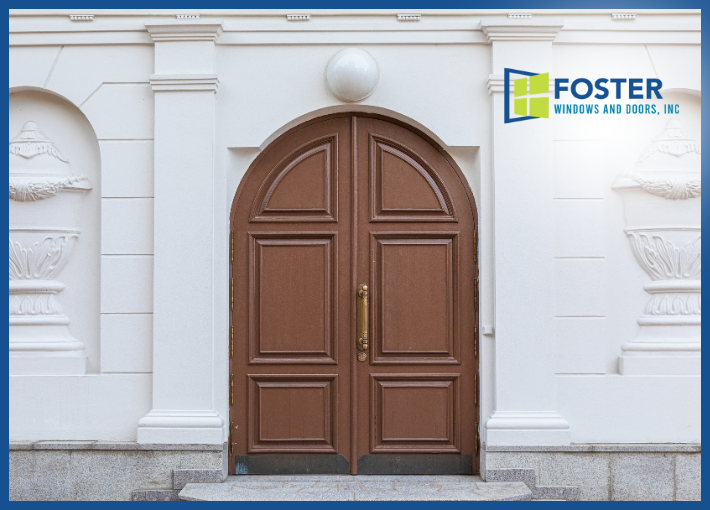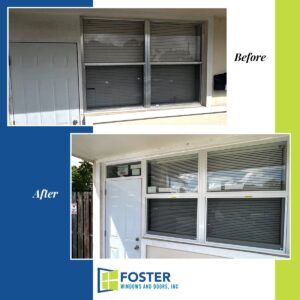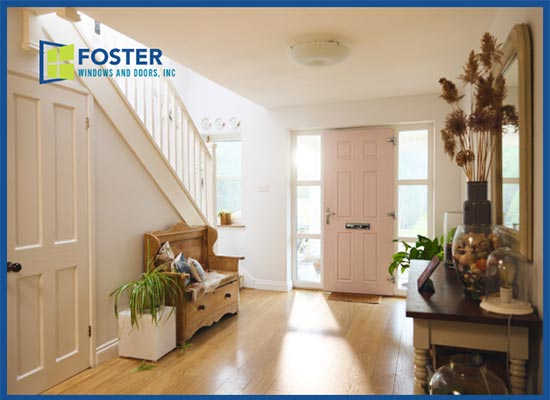


Windows are essential to your home’s comfort, energy efficiency, and overall appearance, but they can wear down or become outdated over time. For those in hurricane-prone areas, having the right windows is even more critical. Explore how to choose the best options for your home and discover how upgrading your windows can improve your living space while saving you money in the long run.
Energy efficient windows are an important consideration for both new and existing homes. Heat gain and heat loss through windows are responsible for 25%–30% of residential heating and cooling energy use.
If you are selecting windows for new construction or to replace existing windows, it’s important to choose the most efficient windows you can afford that work best in your climate.
If your existing windows are in good condition, taking steps to reduce the energy loss through windows can make your home more comfortable and save you money on energy bills.
You have two broad options if you hope to reduce the amount of energy lost through your windows and improve the comfort of your home:
- Update your existing windows to improve efficiency
- Replace your windows.
Update Existing Windows to Improve Efficiency
If your windows are in good condition, taking steps to improve their efficiency may be the most cost-effective option to increase the comfort of your home and save money on energy costs. There are several things you can do to improve the efficiency of your existing windows:
- Check existing windows for air leaks
- Caulk and weather strip. Check out our do-it-yourself project to learn how to weather strip double-hung windows.
- Add energy efficient window coverings. Learn more about your window covering options.
- Add storm windows or panels
- Add solar control film
- Add exterior shading, such as awnings, exterior blinds, or overhangs.
With any efficiency improvements, take steps to ensure proper installation and check for air leaks again after making the improvement.
Replace Your Windows
If you decide to replace your windows, you will have to make several decisions about the type of windows you purchase and the type of replacement you will make.
You may have the option of replacing the windows in their existing frame; discuss this option with your window retailer and installer to find out if it will work for you.
You will also need to decide what features you want in your windows. You will need to decide on the following:
- Frame types
- Glazing type
- Gas fills and spacers
- Operation types
Selection Process
In addition to choosing the window type, you also need to consider design, energy use and labeling, warranties, and proper installation.
First look for the ENERGY STAR label when buying new windows. Then review ratings on the energy performance label from the National Fenestration Rating Council (NFRC) to find the most efficient windows for your needs.
NFRC ratings are included on all ENERGY STAR certified windows and provide a reliable way to determine a window’s energy properties and compare products. Learn about energy performance ratings for windows to understand how to read the labels and energy-use information.
The Efficient Windows Collaborative offers a selection process for both replacement windows and windows for new construction.
Window Selection Tips
- Look for the ENERGY STAR and NFRC labels.
- In colder climates, consider selecting gas-filled windows with low-e coatings to reduce heat loss. In warmer climates, select windows with coatings to reduce heat gain.
- Choose a low U-factor for better thermal resistance in colder climates; the U-factor is the rate at which a window conducts non-solar heat flow.
- Look for a low solar heat gain coefficient (SHGC). SHGC is a measure of solar radiation admitted through a window. Low SHGCs reduce heat gain in warm climates.
- Select windows with both low U-factors and low SHGCs to maximize energy savings in temperate climates with both cold and hot seasons.
- Look for whole-unit U-factors and SHGCs, rather than center-of-glass U-factors and SHGCs. Whole-unit numbers more accurately reflect the energy performance of the entire product.
Installation
Even the most energy-efficient window must be properly installed to ensure energy efficiency and comfort. Have your windows installed by trained professionals according to manufacturer’s instructions; otherwise, your warranty may be void.
Window installation varies depending on the type of window, the construction of the house (wood, masonry, etc.), the exterior cladding (wood siding, stucco, brick, etc.), and the type (if any) of weather-restrictive barrier.
Windows, flashing, and air sealing should all be installed according to the manufacturer’s recommendations to perform correctly.
The Building America Solution Center offers guidance on complete window and frame replacement. Consult this guide with your window professional to ensure proper installation.

Upgrade your home and boost energy efficiency with our premium windows. Explore your options and get expert guidance from the best window repair services in Florida. Let’s create your dream home together! Contact us today at 954-566-6524. Get more design inspiration from our community via Instagram here.
Reference: [https://www.energy.gov/energysaver/update-or-replace-windows]






































